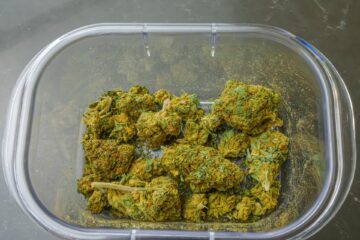![]()
Introduction:
Narcotic drugs or substances are defined medically as any psychoactive compound that consists of numbing properties and has paralyzing effects on the brain. Drugs interfere with the way neurons send, receive, and process signals via neurotransmitters. Some drugs, such as marijuana and heroin, can activate neurons because their chemical structure mimics that of a natural neurotransmitter in the body. This allows the drugs to attach to and activate the neurons. Drugs also have a numbing effect on the body and are used in injections and surgeries.
Drug Culture in India
The use of drugs has always been a debate in India. The spectrum of discussion ranges from widespread availability and stringent enforcement to tolerance and prohibition.
Early humans lived as hunter-gatherers for a long time before the transition of their lifestyle to cultivation, poultry, breeding animals, and other activities. Sects of people like the Amazon Indians or the Kalahari Desert Bushman collected information on pharmacological plants during their wanderings. After adopting a pastoral lifestyle, humans may have observed the effects of psychoactive plants on their flocks. Tradition has it that Ethiopian priests started roasting and boiling coffee beans to stay awake through nights of prayer after a shepherd noticed how his goats were frolicking after feeding on coffee shrubs. (MA, 2007)[1]
The use of psychotic substances has been in practice in India since ancient times. Historical scriptures like Dhanvantari Nighantu mention the usage of Cannabis as early as 2000 BCE. One of the four Vedas – Atharva Veda mentions Cannabis as a source of happiness. (Shaik, 2020)[2] ‘Ayurveda’, the ancient Indian text which codified medicinal practices, methods, and medical knowledge, uses drug therapy.
Drugs like opium and cannabis were legal in colonial India until the worldwide movement for a ban on recreational drugs. They were legally regulated through the Opium Act, 1878.
Convention of I.N.C.B and The NDPS Act
As established by the 1961 Convention of the International Narcotics Control Board, opium poppy, coca bush, and cannabis plants are classified as ‘narcotic drugs’ (even cocaine which stimulates the brain). The Convention gave a timeline of 25 years to India to legalize the ban of narcotic substances but did not tell countries to ban drug abuse or consumption.
The Convention does not mention personal use of drugs and the quantity to be considered as illegal is vague. It allows non-custodial alternatives to conviction like counseling and treatment for minor offenses.
Unlike India, other countries take into consideration the surrounding aspects like the background of the case or whether the defendant was found with other users of the drugs (indicating non-personal use), adulteration, etc and some states of the USA have also legalized the usage of cannabis for adult recreational use. Otherwise, violation of the law attracts strict punishment and penalties including a term in prison.
Uruguay was the first country to legalize marijuana’s production, sale, and consumption in December 2013 which monitored the customer’s purchases from a licensed pharmacy every month. Countries like Canada, Spain, South Africa, and the Netherlands also have legislation that regulates public consumption of drugs at various levels. Portugal has completely decriminalized drug usage in the country and has experienced far lower overdose rates, as well as AIDS cases related to addiction, since legalization.
The Narcotic Drugs and Psychotropic Substances Act was passed in 1985 for this purpose by the then Rajiv Gandhi government. This act leaves out ‘Bhang’, which is made from the leaves of the cannabis plant and used traditionally in Indian festivals like Holi and Maha Shivarathri. (The Narcotic Drugs and Psychotropic Substances Act, 1985)[3]
The Act caused a conundrum in the legislation and the Parliament regarding the status of the farmers whose lifestyle depended on the production of substances like opium and poppy growing in states like Uttar Pradesh, Rajasthan, and Madhya Pradesh.
Unlike other countries, there were no clear guidelines regarding the punishment of offenses if caught under illegal drug usage in India. After the passing of the 1985 Act, in many cases, the verdict was harsh and draconian, even for as small of a quantitative amount as 0.5g of heroin. 10-15 years of imprisonment was given in most cases where personal custody was not proved.
The National Human Rights Commission conducted a study on the workings of the NDPS Act and concluded that it was discriminatory on the part of the Supreme Court judgments and trials and inhuman towards people caught with a very minute proportion of drug substances and yet languishing in jail for as the same period as those with huge amounts.
Even after amending the act four times, in 1989, 2001, 2014, and 2016, there are still problems with verdicts given under the act. In June 2021, in a verdict given by the Tripura High Court, it was discovered that a significant provision of the act was rendered inoperable due to a drafting issue of Section 27A of the act. This means, according to the verdict, financing illicit trafficking of narcotics and harboring offenders is no longer a crime in India in the absence of view of the oversight by the high court. The section states that no one can be coerced into carrying out any of the actions like drug consumption, transportation, or production. (Vishwanath, 2021)[4] Often small drug couriers or people in bullock carts or auto-rickshaws are given some amount of money to transport the products. Many of them don’t even know the material they are carrying and when an investigation is done against a whole scam, these people become the victims. Women are also coerced, instigated, and threatened to join this line of business illegally due to social circumstances or other perpetrators of crime.
After the amendment act of 2001, the Act provides immunities for drug offenses to government officers in the discharge of their duties, offenders in other cases to obtain his/her evidence, Juvenile offenders, and Addicts charged with small quantities after acceptance of volunteering for de-addiction and treatment. An addict is a person whose survival depends on the usage of narcotic drugs and substances. The amendment also introduces a rationalized system, classifying as intermediate quantities and commercial quantities.
Given the extreme level of criticism and prejudice against perceived ‘social devils’ like drugs, prostitution, or alcohol consumption in the country, no analysis of the context was taken during the investigation and the trial was often one-sided. Although the prohibition of drugs and psychotropic substances hasn’t proved to decrease drug business as drug busting cases seem to have increased three-fold, especially during the pandemic. Contrary to popular belief, hippie culture in Goa does not promote addiction unlike people from the rest of the states whose perception of drugs is fun (especially teenagers) or something exciting. The best example is ayahuasca which is used for wrong purposes but as mentioned in the ancient scriptures, weed, and drugs like this, have been used in spiritual processes like meditation and trance when provided in moderation.
High-profile cases like the Sushant Rajput case last year and the recent case of Aryan Khan’s drug scandal continue the discussion of the legalization of drugs in the country. In such cases, the influence of the activities of a ‘celebrity’ is given more importance than the actual quantity of drugs found in possession, tagging it as ‘drug scandal or mafia’. Daily headline news related to the seizure of the so-called ‘drug mafia’ including foreign nationals from Siberia, Dubai especially in international airports like the Rajiv Gandhi International Airport, Hyderabad is on the rise.
The Act includes a prohibition from the manufacture, production, cultivation, possession, sale, and purchase, transport, and storage, consumption of ganja (the flowering and fruiting tops of the cannabis plant), charas, a mixture containing or not containing neutral material, leaf of the Coca plant, etc, without due permission from appropriate authorities.
With the onset of the pandemic, demand rose for narcotic drugs and precursor chemicals for industrial, medical, and scientific purposes. However, controlled production and distribution of these substances ensured no patient suffered unnecessarily. The INCB ensured timely supply and access in emergencies as well. India, taking the lead in vaccine production during the second wave has played a significant role in the manufacture of these drugs. (Message from the INCB President on the COVID-19 pandemic)[5]
Arguments for Legalisation
Although drugs like cannabis and marijuana have been in the constant purview of anti-legalization, there are many advantages to not overlook. Cannabis helps in preventing diabetes impacting insulin levels in the body and also studies prove its fight against cancer. Cannabis also controls mood swings and helps patients in severe depression and after cases like the Sushant Rajput alleged suicide, the importance of mental health has been realized. Decriminalising users will avoid social aversion and abandonment by society and will help prevent addicts or new users from slipping into more problematic behaviors. (Rana, 2021)[6]
The legalization of Marijuana can be an extra source of revenue through taxes for the government and through their regulation, the composition of different substances could be more closely controlled, and also this subsides adulteration. There would be huge savings in money and no wastage of resources in patrolling and policing the illegal drug trade to the same extent.
Arguments against Legalisation
The mindset of people in general if drugs become legal would turn towards experimentation since they are now more openly accessible. This could lead to grave addiction.
When alcohol and tobacco were legalized, it gave the wrong conception that they are safe for consumption. It could be the same case for drugs as well. Many serious crimes like theft, rape, murder have been linked with the intoxication of drugs and alcohol suggesting an influence under these substances and widespread use would cause more crimes.
Lastly, India is a signatory to three of the United Nations’ drug conventions, namely:
- Single Con Single Convention on Narcotic drugs held in 1961
- Convention on Psychotropic Substances held in 1971.
Convention against Illicit trafficking Narcotic Drugs and Psychotropic substances held in 1988. (Jayakumar, 2018)[7] Being part of these signatories goes against decriminalization and non-legalization of narcotic drugs and substances in India.
Conclusion
The debate of legalization and decriminalization is not new. In 2017, At a GOM (group of ministers) meeting, Women and Child Development Minister Maneka Gandhi suggested legalizing marijuana, taking the US legislation as an example. The war on drugs worldwide was a failure due to discrimination of people of color along the lines of drug usage.
To offset such failures in India, awareness campaigns and laws that cater to the regulated usage of drugs are a big step towards making a positive impact regarding drug use. This can lead to use in studies, research and create advances in the medical field.
References:
[1] MA, C. (2007, December). Historical and cultural aspects of man’s relationship with addictive drugs. Dialogues Clin Neurosci, 9(4), 355–361. doi:10.31887/DCNS.2007.9.4/macrocq
[2] Shaik, S. (2020, August 29). Legalization of Cannabis in India. Retrieved from https://timesofindia.indiatimes.com/readersblog/sameer/legalization-of-cannabis-in-india-25286/
[3] The Narcotic Drugs and Psychotropic Substances Act. (1985). Retrieved from https://www.indiacode.nic.in/handle/123456789/1791?sam_handle=123456789/1362
[4] Vishwanath, A. (2021, June 24). Explained: An oversight that left the key provision of the NDPS Act inoperable. Retrieved from https://indianexpress.com/article/explained/explained-how-a-drafting-oversight-has-made-the-ndps-act-toothless-in-a-key-provision-7366695/
[5] Message from the INCB President on the COVID-19 pandemic. (n.d.). Retrieved from https://www.incb.org/incb/en/coronavirus.html
[6] Rana, R. (2021, October 8). Is It Time For India To Relook At Its Policy Towards Marijuana? Retrieved from https://thelogicalindian.com/trending/cannabis-legalization-in-india-31139
[7] Jayakumar, M. (2018). Legalization of Drugs in India. 2(1). Retrieved from https://www.ijlmh.com/wp-content/uploads/2019/04/Legalization-of-drugs-in-India.pdf



0 Comments